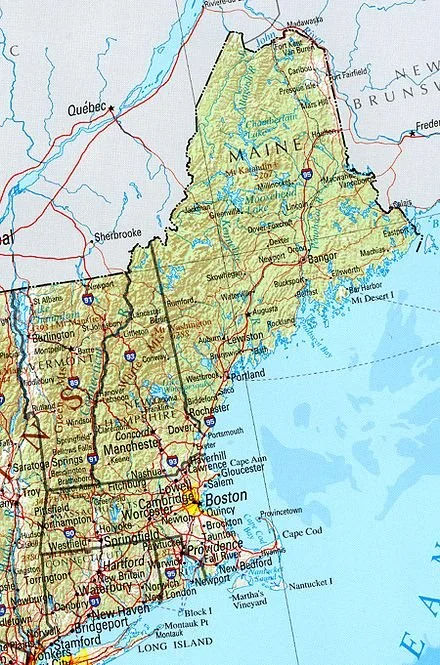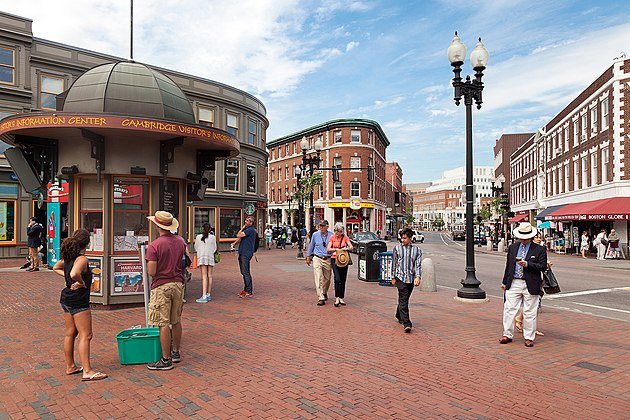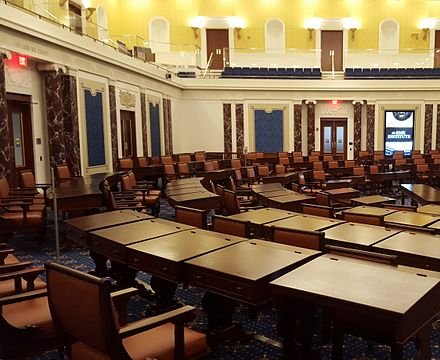
John O. Harney: All you can eat — interesting data From New England and beyond
From The New England Journal of Higher Education, a service of The New England Board of Higher Education (nebhe.org)
BOSTON
The ranks of New Hampshire, Vermont and Maine as the least diverse states in America, based on measures of socioeconomic, cultural, economic, household, religious and political diversity: 47th, 48th, 49th WalletHub
Ranks of Connecticut, Massachusetts, Vermont, Rhode Island, Maine and New Hampshire among the most expensive U.S. states to retire in: 3rd, 4th, 6th, 7th, 10th, 14th Bankrate
Increase in lifetime earning associated with lifetime labor union membership: $1,300,000 Parolin, Z., & VanHeuvelen, T., The Cumulative Advantage of a Unionized Career for Lifetime Earnings, ILR Review
Support for labor unions among Gen Zers (defined as being 23 years old or younger in 2020): 64% Center for American Progress
World rank of California’s economy if it were a country: 5th (soon to be 4th) Bloomberg News
Percentage of Americans who rely on autocorrect to correct misspellings: 79% Unscrambled Words
Percentage who say they judge someone who often misspells: 61% Unscrambled Words
Share of New Bedford (Mass.) High School students who were “chronically absent” in 2022, meaning they missed at least 18 days, or 10% of school: 70% The New Bedford Light on NAEP Data
Number of reports of book bans received by the nonprofit PEN America during a nine-month period from July 2021 through March 2022: 1,586 PEN America (PEN American reports 671 additional book bans during that period have come to light. A further 275 more bans followed from April through June, bringing the total for the 2021-22 school year to 2,532 bans.)
Percentage of those banned books that had a protagonist or main character of color: 41% PEN America
Percentage of those banned books that had LGBTQ themes: 33% PEN America
Number of America’s approximately 90,000 school board members who are known to be LGBTQ: 90 Victory Institute
Number of additional LGBTQ school board members who would have to be elected to match the 7% of the adult U.S. population that identifies as LGBTQ: 6,300 Victory Institute
At Harvard Square, in Cambridge, Mass.
From 2010 to 2015, Harvard University’s admission rate for “legacy” applicants with at least one Harvard-educated parent: 34% Jennifer Lee, sociology professor at Columbia University, op-ed in Los Angeles Times
Admission rate for “non-legacy” applicants who do not have a Harvard-educated parent: 6% Jennifer Lee, sociology professor at Columbia University, op-ed in Los Angeles Times
John O. Harney is executive editor of The New England Journal of Higher Education.
Painting of “Still Life with Kitaj’s Death mask,” by Montserrat College of Art (Beverly, Mass.) professor Timothy Harney.
The status of youth engagement in American democracy
At the Edward M. Kennedy Institute for the United States Senate at the UMass Boston campus, on Columbia Point: Inside the replica of the U.S. Senate chamber.
From The New England Journal of Higher Education (NEJHE), a service of The New England Board of Higher Education (nebhe.org)
In the following Q&A, NEJHE Executive Editor John O. Harney asks Mary K. Grant, president of the Edward M. Kennedy Institute for the United States Senate, in Boston, about the institute’s work connecting postsecondary education to citizenship and upcoming elections. Edward M. Kennedy (1932-2009) was U.S. senator from Massachusetts in 1962-2009. He became known as a “liberal lion” of that body.
Harney: What did the 2016 and 2018 elections tell us about the state of youth engagement in American democracy?
Grant: We are seeing a resurgence of interest in civic engagement, activism and public service among young people. From 2014 to 2018, voter turnout among 18- to 29-year-olds increased by 79%, the largest increase among any group of voters.
The 2016 election was certainly a catalyst for galvanizing renewed interest. Since 2016, we have seen increases in people being more engaged in organizing platforms, messages and movements to motivate their peers and adults. The midterm elections brought a set of candidates who were the most diverse in our history, entering politics with urgency and not “waiting their turns” to run for office. One of the most encouraging findings was that those who felt most frustrated were more likely to vote.
While young-voter turnout in the 2018 election was historically high, it was still just 31% of those eligible to vote. Democracy depends on the voice of the people. And a functioning democracy depends on participation, particularly in polarized times. Senator Kennedy said “political differences may make us opponents, but should never make us enemies.” He envisioned the Edward M. Kennedy Institute as a venue for people from all backgrounds to engage in civil dialogue and find solutions with common ground.
As a nonpartisan, civic education organization, the institute’s goal is to educate and engage people in the complex issues facing our communities, nation and world. Since we opened four years ago, we have had more than 80,000 students come through our doors for the opportunity to not only learn how the U.S. government works, but also to understand what civic engagement looks like. All of us at the Kennedy Institute see how important it is to give young people a laboratory where they can truly practice making their voices heard and experience democracy; our lab just happens to be a full-scale replica of the U.S. Senate Chamber.
Harney: How else besides voting do you measure young people’s civic citizenship? Are there other appropriate measures of activism or political engagement?
Grant: Voter turnout is one measure, but civic engagement is needed every day. Defined broadly, activism and civic citizenship are difficult to measure. We engage in our local, state and national communities in so many ways.
Our team at the institute values reports like “Guardian of Democracy: The Civic Mission of Schools” that discuss how the challenge in the U.S. is not only a lack of civic knowledge, but also a lack of civic skills and dispositions. Civic skills include learning to deliberate, debate and find common ground in a framework of respectful discourse, and thinking critically and crafting persuasive arguments and shared solutions to challenging issues. Civic dispositions include modeling and experiencing fairness, considering the rights of others, the willingness to serve in public office, and the tendency to vote in local, state and national elections. To address the critical issues and make real social change, we need a better fundamental understanding of how our government works. And we need better skills for healthy, respectful debate.
Harney: What are the key issues for young voters?
Grant: The post-Millennial generation is the most racially and ethnically diverse generation in our history. Only 52% identify as non-Hispanic whites. As they envision their future livelihoods in an increasingly automated workplace, they are concerned about climate change and how related food security may affect the sustainability of daily life and they are concerned about income inequality, student debt, gun violence, racial disparities, and being engaged and involved in their communities.
The institute’s polling data indicated that interests for 18-34-year-olds were reflective of society as a whole, but gun rights and gun control, education and the economy would be among the most important as they are deciding on congressional candidates in the next election.
Young people are focused on the complex global issues that concern us all but with added urgency. A Harvard Institute of Politics Youth Poll this spring found that 18-29-year-old voters do not believe that the baby boomer generation—especially elected officials—“care about people like them.” And, they expressed concern over the direction of the country.
Harney: Are there any relevant correlations between measures of citizenship and enrollment in specific courses or majors?
Grant: In a democracy, we need all majors. And more importantly, we need students and graduates to know how to work together. In a global economy, people in the sciences, business and engineering work right next to people in the fields of social sciences. I had the privilege of leading two of the finest public liberal arts college and universities in the country. I am a firm believer that regardless of disciplinary area, problem-solving requires us to ask questions, to be curious and open-minded, to think critically and creatively, incorporate a variety of viewpoints and work in partnership with others. We need to understand how you take an idea, move it along and make it into something that can improve the common good.
Harney: Are college students and faculty as “liberal” as “conservative” commentators make them out to be?
Grant: From my own work in higher education, I can say that there is diversity of perspectives and viewpoints on college campuses, which is encouraging and exciting. Liberals and conservatives are not unique in the ability to hold on quite strongly to their own viewpoints. Anyone who has ever witnessed a group of social and natural scientists discuss research methodologies can attest to that. We all need to learn how to listen to ideas other than our own.
Harney: What are ways to encourage “Blue-State” students to have an effect on “Red-State” politics and vice versa?
Grant: Part of the country’s challenge in civil discourse is that we stop listening or we are listening for soundbites to which we overreact. One of the most important skills that we can develop is the ability to listen actively. It’s truly remarkable what can happen when students have an opportunity to get to know and work and learn with their peers across the country and around the world.
What we’re finding in our programs is that people are hungering for conversation, even on difficult matters. It’s similar to the concept of creating spaces on college campuses where you can intentionally connect with people. This coming fall, we’re using an award that we earned from the Annenberg Public Policy Center, at the University of Pennsylvania, to pilot a program called “Civil Conversations.” The program is designed to help eighth through 12th grade teachers develop the skills necessary to lead productive classroom discussions on difficult public policy issues. We’re starting in Massachusetts and plan to expand to all the blue, red and purple states.
And for those coming to the institute, we convene diverse perspectives through daily educational and visitor programs where people can talk with and listen to others who might be troubled or curious about the same things you are. Our public conversation series and forums bring together government leaders with disparate ideologies and from different political parties who are collaborating on a common cause; we host special programs that offer insight into specific issues and challenges facing communities and civic leaders, and what change-makers are doing about it.
Harney: What role does social media play in shaping engagement and votes?
Grant: Social media has fundamentally changed not only how we get our information, but how we interact with each other. According to a Harvard Institute of Politics Youth Poll, more than 4-in-5 young Americans check their phone at least once per day for news related to politics and current events.
As social media reaches more future and eligible voters, and when civic education is lacking, those who depend on social media platforms are at risk of consuming inaccurate information. This underscores not only the need for robust civic education programs, but also those in media literacy.
Harney: How can colleges and universities work together to bolster democracy?
Grant: Anyone who spends time around young people or on a college campus feels their energy and can’t help but come away with a renewed sense of hope. Colleges can continue to work together and advocate for unfettered access to higher education for students in all areas of the country. More specifically, they can engage with organizations like Campus Compact, a national coalition of more than a thousand colleges and universities committed to building democracy through civic education and community development.
Harney: How will New England’s increased political representation of women and people of color affect real policy?
Grant: The increasingly diverse representation helps to broaden and deepen the range of perspectives, ideas and viewpoints that influence public policy. There is also a renewed energy that is generated and it encourages next generation leaders to get involved, run for office, work on campaigns and make a difference in their communities. The institute has held several Women in Leadership programming events that highlight the lack of gender equity and racial diversity in public office and provide opportunities for women to network and learn more about the challenges and the opportunities.
Harney: Do young voters show any particular interest in where candidates stand on “higher education issues” such as academic freedom?
Grant: Students may not be focused on “higher education issues,” per se, but they do have a lot to say about accessibility and affordability. This generation is saddled with an enormous amount of student loan debt. That is certainly one of their greatest concerns, particularly when it comes to the 2020 presidential race.
Academic freedom is important in making colleges and universities welcoming to the exchange of differing ideas, which is a bedrock of democracy. As a former university chancellor, I believe that it is essential to create an environment where we welcome a diversity of opinion. We need to model the ability to listen to and consider viewpoints that may be very different from our own. We need to show students that we can sit down with people who think differently, find common ground, and even respectfully disagree. That’s a key part of what the Edward M. Kennedy Institute is all about.
John O. Harney: Some big changes at the top
The (Brutalist) Federal Reserve Bank of Boston tower, at the edge of the Boston financial district.
— Photo by Fox-orian
(New England Diary is catching up with this report, first published Feb. 15.)
From The New England Journal of Higher Education, a service of The New England Board of Higher Education (nebhe.org)
BOSTON
The Federal Reserve Bank of Boston named University of Michigan Provost Susan M. Collins to be the bank’s next president and CEO. An international macroeconomist, Collins will be the first Black woman to lead a regional bank in the 108-year history of the Fed system. In addition to being the University of Michigan’s provost and executive vice president for academic affairs, Collins is the Edward M. Gramlich Collegiate Professor of Public Policy and Professor of Economics. She holds an undergraduate degree from Harvard University and a doctorate from the Massachusetts Institute of Technology. She will succeed Eric Rosengren, who retired in September after 14 years leading the Boston Fed.
Massachusetts Institute of Technology President L. Rafael Reif announced he will leave the post he has held for the past decade at the end of 2022. A native of Venezuela, Reif began working at MIT as an electrical engineering professor in 1980, then served seven years as provost before being named president in 2012. Among other things, he presided over a $1 billion commitment to a new College of Computing to address the global opportunities and challenges presented by the rise of artificial intelligence (AI) and oversaw the revitalization of MIT’s physical campus and the neighboring Kendall Square in Cambridge, Mass. Reif said he will take a sabbatical, then return to MIT’s faculty in its Department of Electrical Engineering and Computer Science.
Tufts University President Anthony Monaco told the campus that he will step down in the summer of 2023 after 12 years leading the university. A geneticist by training, Monaco ran a center for human genetics at Oxford University in the U.K. and, at Tufts, worked with the Broad Institute on COVID-19 testing programs that helped universities return to in-person learning. Among his accomplishments, Monaco oversaw the university’s 2016 acquisition of the School of the Museum of Fine Arts in Boston as well as the removal of the “Sackler” name from its medical school after the Sackler family and its company, Purdue Pharma, were found to be key players in the opioid crisis.
The Biden administration tapped David Cash, dean of the John W. McCormack Graduate School of Policy and Global Studies at UMass Boston and former commissioner of the Massachusetts Department of Environmental Protection, to be the regional administrator for the U.S. Environmental Protection Agency in New England.
John O. Harney is executive editor of The England Journal of Higher Education.





